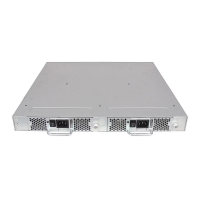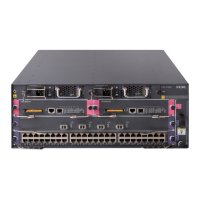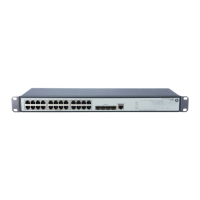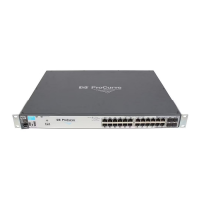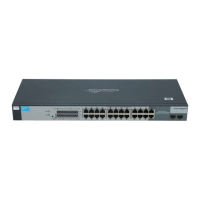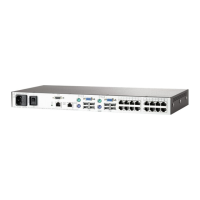78 Fabric OS Administrator’s Guide
53-1002446-01
Frame Redirection
4
FEC is useful when broadcasting data to many destinations simultaneously from a single source,
when retransmissions might be costly.
Use the portCfgFec command to enable and disable FEC on a port, as shown in the following
examples.
1. Connect to the switch and log in using an account with admin permissions.
2. Enter the portcfgfec command, specifying the port or range of ports on which FEC is to be
enabled.
portcfgfec --enable slot/port
To enable the FEC feature on a single port and display the configuration, enter the following
commands.
switch:admin> portcfgfec --enable 1
switch:admin> portcfgfec --show 1
Forward Error Correction capable: ON
Forward Error Correction configured: ON
To enable the FEC feature on a port range, enter the following command. In this example, port 1
already has FEC enabled, and so it remains enabled.
switch:admin> portcfgfec --enable 0-8
Same configuration for port 1
To disable the FEC feature on a port range, enter the following command.
switch:admin> portcfgfec --disable 0-8
Frame Redirection
Frame Redirection provides a means to redirect traffic flow between a host and a target that use
virtualization and encryption applications, such as the Brocade SAS blade and Brocade Data
Migration Manager (DMM), so that those applications can perform without having to reconfigure
the host and target. You can use this feature if the hosts and targets are not directly attached.
Frame Redirection depends on the wide distribution of the Defined Zone Database. The Defined
Zone Database on Fabric OS switches is pushed out to all other Fabric OS switches in the fabric
that support Frame Redirection. Redirection zones exist only in the defined configuration and
cannot be added to the effective configuration.
Fabric OS v7.0.1 is not supported on the Brocade 7600 or Brocade SAS blade. However, this
hardware can run in a pre-Fabric OS v7.0.1 system and attach to a Fabric OS v7.0.1 fabric.
Frame Redirection uses a combination of special frame redirection zones and name server
changes to spoof the mapping of real device WWNs to virtual PIDs.

